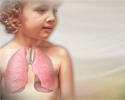Exercising and asthma at school
Asthma - exercise school; Exercise - induced asthma - school
Sometimes exercise triggers asthma symptoms. This is called exercise-induced asthma (EIA).
The symptoms of EIA are coughing, wheezing, a feeling of tightness in your chest, or shortness of breath. Most times, these symptoms start soon after you stop exercising. Some people may have symptoms after they start exercising.
Be Careful Where and When the Student Exercises
Having asthma symptoms when exercising does not mean a student cannot or should not exercise. Taking part in recess, physical education (PE), and after-school sports is important for all children. And children with asthma should not have to sit on the side lines.
School staff and coaches should know your child's asthma triggers, such as:
- Cold or dry air. Breathing through the nose or wearing a scarf or mask over the mouth may help.
- Freshly mowed fields or lawns.
- Polluted air.
A student with asthma should warm up before exercising and cool down afterward.
Helping a Child With Asthma Stay Active in School
Read the student's asthma action plan. Make sure staff members know where it is kept. Discuss the action plan with the parent or guardian. Find out what type of activities the student can do and for how long.
Teachers, coaches, and other school staff should know the symptoms of asthma and what to do if a student has an asthma attack. Help the student take the medicines listed in their asthma action plan.
Encourage the student to participate in PE. To help prevent an asthma attack, modify PE activities. For example, a running program might be set up this way:
- Walk the whole distance
- Run part of the distance
- Alternate running and walking
Some exercises may be less likely to trigger asthma symptoms.
- Swimming is often a good choice. The warm, moist air may keep symptoms away.
- Football, baseball, and other sports that have periods of inactivity are less likely to trigger asthma symptoms.
Activities that are more intense and sustained, such as long periods of running, basketball, and soccer, are more likely to trigger asthma symptoms.
Taking Asthma Medicines Before Exercise
If an asthma action plan instructs the student to take medicines before exercising, remind the student to do so. These may include short-acting and long-acting medicines.
Short-acting, or quick-relief, medicines:
- Are taken 10 to 15 minutes before exercise
- Can help for up to 4 hours
Long-acting inhaled medicines:
- Are used at least 30 minutes before exercise
- Last up to 12 hours
Children can take long-acting medicines before school and they will help for the whole day.
References
Brannan JD, Kaminsky DA, Hallstrand TS. Approach to the patient with exercise-induced bronchoconstriction. In: Burks AW, Holgate ST, O'Hehir RE, et al, eds. Middleton's Allergy: Principles and Practice. 9th ed. Philadelphia, PA: Elsevier; 2020:chap 54.
National Heart, Lung and Blood Institute. Asthma Management Guidelines: Focused Updates 2020. www.nhlbi.nih.gov/health-topics/asthma-management-guidelines-2020-updates. Updated February 4, 2021. Accessed February 8, 2024.
Vishwanathan RK, Busse WW. Management of asthma in adolescents and adults. In: Burks AW, Holgate ST, O'Hehir RE, et al, eds. Middleton's Allergy: Principles and Practice. 9th ed. Philadelphia, PA: Elsevier; 2020:chap 52.
Review Date: 2/3/2024
Reviewed By: Frank D. Brodkey, MD, FCCM, Associate Professor, Section of Pulmonary and Critical Care Medicine, University of Wisconsin School of Medicine and Public Health, Madison, WI. Also reviewed by David C. Dugdale, MD, Medical Director, Brenda Conaway, Editorial Director, and the A.D.A.M. Editorial team.


